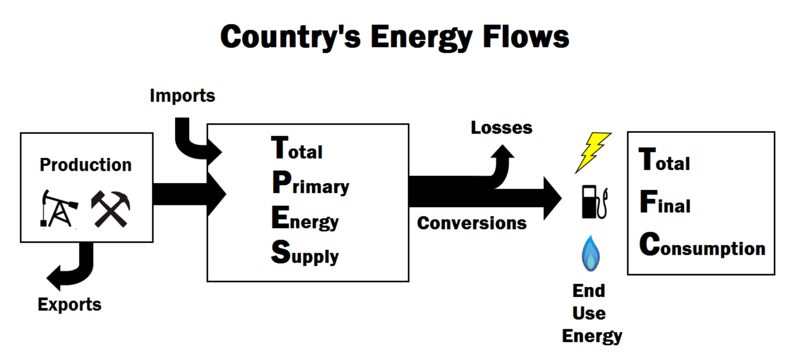Total final consumption
Total final consumption, also referred to as gross final energy consumption, is the aggregate of all of the end use energy that is used for providing various energy services. This means that this total focuses on energy currencies like electricity and secondary fuels like gasoline. Electricity must be made by power plants, and most of these power plants are heat engines and have a fair amount of waste heat. Usually this sum subtracts off the energy used in transporting the electricity or the energy used at a power plant as energy industry own use. The amount of energy that a country uses depends on where in the energy supply chain one is looking. The subtlety is consumers don't use coal, they use electricity which requires an infrastructure that often uses coal.

The focus of total final consumption is in contrast with the total primary energy supply (TPES) (see figure 1). Total final consumption is made of energy that can readily be used by consumers to serve their energy needs, while TPES is an aggregate of all of the energy going into the energy sector. This consumer based focus is why losses due to the transportation from the power plants to the consumer is subtracted off. For a detailed explanation of why this difference matters, please see primary vs end use accounting.
Total final consumption allows a sector by sector approach to looking at how energy is used. One way to divide the economy is into these four sectors:
- Residential energy use
- Commercial energy use
- Transportation energy use
- Industrial energy use
- Agricultural energy use
Data visualization
Explore the data in the simulation below to find out how the total final consumption of energy varies by country and by sectors within that country. Click on a sector on the right side of the visualization to explore its end use paths in more detail, and click "see all categories" to return to the original screen.
To see how total final consumption changes with time please see the data visualization on end use energy.
References
- ↑ Created internally by a member of the Energy Education team.

